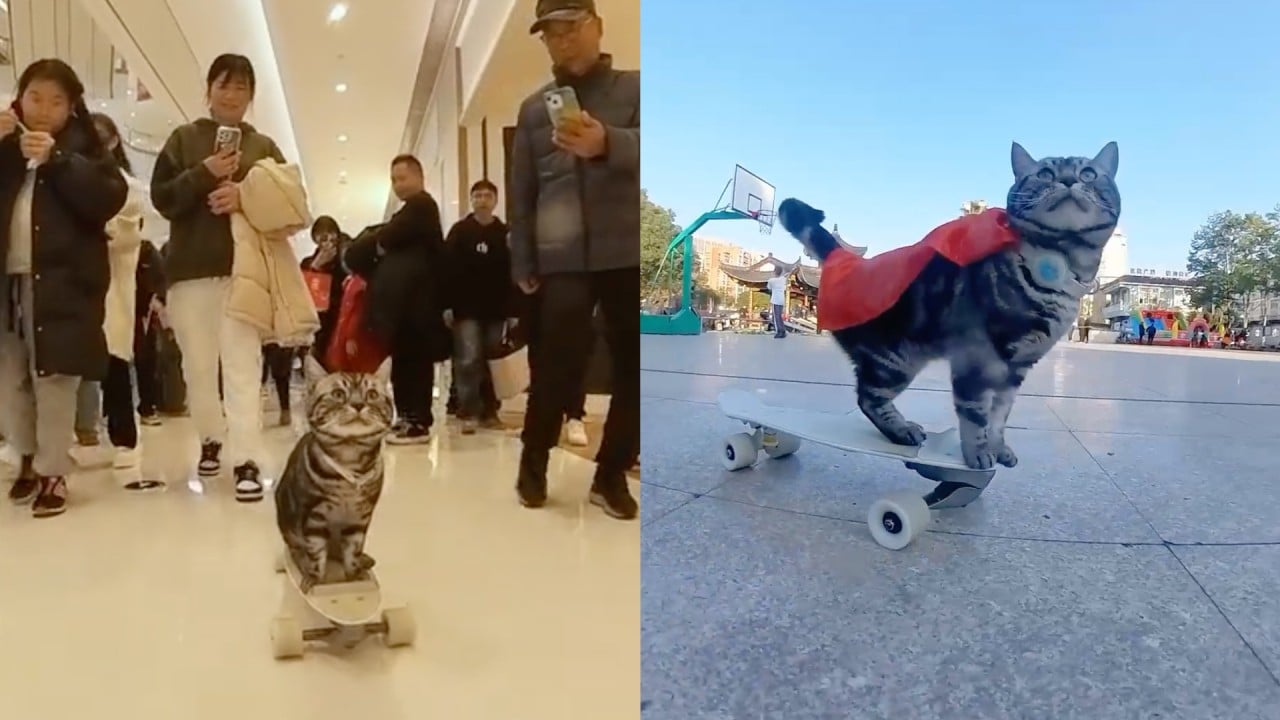Luo Aiping and He Yuqi, both single, white-collar workers in Guangzhou, have had new pets join their lives over the past couple years.
Luo, a lawyer in her 40s, got her first cat in 2021, and now she has four plus a dog.
She starts and ends every day by walking her dog, and having decided to give her pets more space, she even moved from the central business district to the suburbs, even though it means her commute takes over two hours.
He, a teacher in his 30s, has three dogs and a cat.
“I like to spend my social time rescuing small animals. Taking all my pets on a trip to the grasslands is my dream,” he said.
In 2023, China’s population fell for the second year in a row, while the number of cats and dogs owned as pets increased by 1.1 and 6.8 per cent year on year, respectively, totalling over 120 million.
And despite the ongoing economic headwinds, China’s pet economy remains more prosperous compared to most other sectors.
According to the China Pet Industry Operation Status and Consumer Market Monitoring Report released by market consultancy iiMedia Research from 2023 to 2024, even though the growth rate halved from its peak of over 33.5 per cent in 2020, the scale of China’s pet economy is expected to reach 811.4 billion yuan (US$112 billion) by 2025, up from 592.8 billion yuan in 2023 and 295.3 billion in 2020.
And with changes in China’s demographic structure, the ageing and single population have become the primary consumers in China’s pet economy, driving the rapid growth of demand for pet companionship, said Jack Bian, founder of ShiTa, a network platform covering the pet industry chain including breeding, food, supplies, travel, beauty, medical care and entertainment.
According to the National Bureau of Statistics, single-person households accounted for 16.77 per cent of all households in China last year.
And while there is still a significant gap compared to 70 per cent in the United States and 46 per cent in Europe, the penetration rate of households owning pets in China is rapidly increasing, having reached around 22 per cent by 2023, the iiMedia report said.
Having a single pet is a reality; having both cats and dogs at a young age is a dream life
According to the 2024 Pet Industry Insight Report released by Chinese Instagram-like social media platform Xiaohongshu, young people under the age of 29 living in first- and second-tier cities are gradually becoming the mainstream group of pet owners.
The report stated that young people’s concept of raising their pets has shifted to treating them as family members, even popularising the concept of “treating pets as well as treating themselves”.
Around 56 per cent of pet owners have changed their lifestyles for their pets, and 88 per cent said their spending had significantly increased or remained the same compared to the previous year, as young people are willing to spend generously, hoping to provide new experiences for their pets.
The Xiaohongshu report said that “having both cats and dogs” was the hottest topic of discussion among pet owners online, with over 460 million related posts on the social media platform.
“Having a single pet is a reality; having both cats and dogs at a young age is a dream life,” the Xiaohongshu report said.
I prioritise my pets over my social life and would forgo gatherings with friends for them
Millennials born between 1980-95 and Generation Z born between 1995-2010 see pets as companions and family members, driving continuous consumption upgrades and the emergence of new professions in the industry, such as traditional Chinese medicine herbalists, pet detectives and animal psychological consultants, Bian said.
His platform provides high-end medical products like stem cell treatment, psychological counselling, insurance and travel photography services for pets, reaching over 1 million pet owners nationwide and involving hundreds of pet-related start-ups.
“I prioritise my pets over my social life and would forgo gatherings with friends for them. Their health and happiness are very important to me,” Luo said,
“I spend over 1,000 yuan (US$138) each month on pet food and another more than 1,000 yuan on pet snacks and toys, and these purchases make me happy.
“To be precise, I enjoy the single life with pets.”
Pet psychological consultation, meanwhile, costs range from 100 yuan to 500 yuan per hour.
“My cat, adopted last year, is disabled. I think she has similar feelings of isolation and sadness as humans do. So I plan to pay a pet communicator to help me understand its emotions and make it happier,” said He.
And according to the iiMedia report, 82.4 per cent of Chinese consumers pay attention to pet product brands, with the process of domestic replacement also occurring in the pet economy, with owners’ preference for Chinese brands significantly rising.
According to Euromonitor, a market research database provider, in China’s mid-range dry pet food market costing between 60 yuan and 80 yuan per kilogram, among the top 10 brands in terms of market share, over half were domestic brands.




